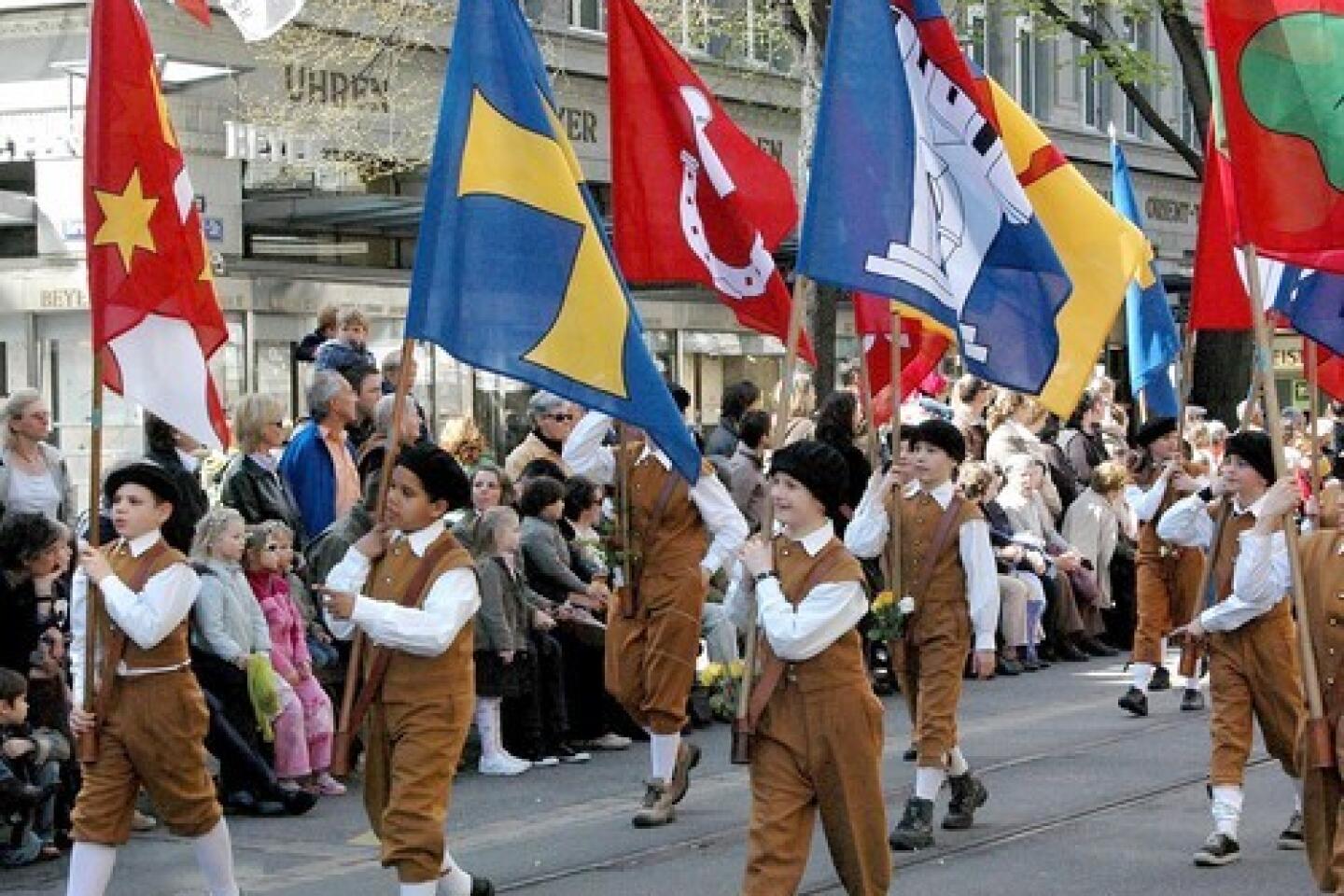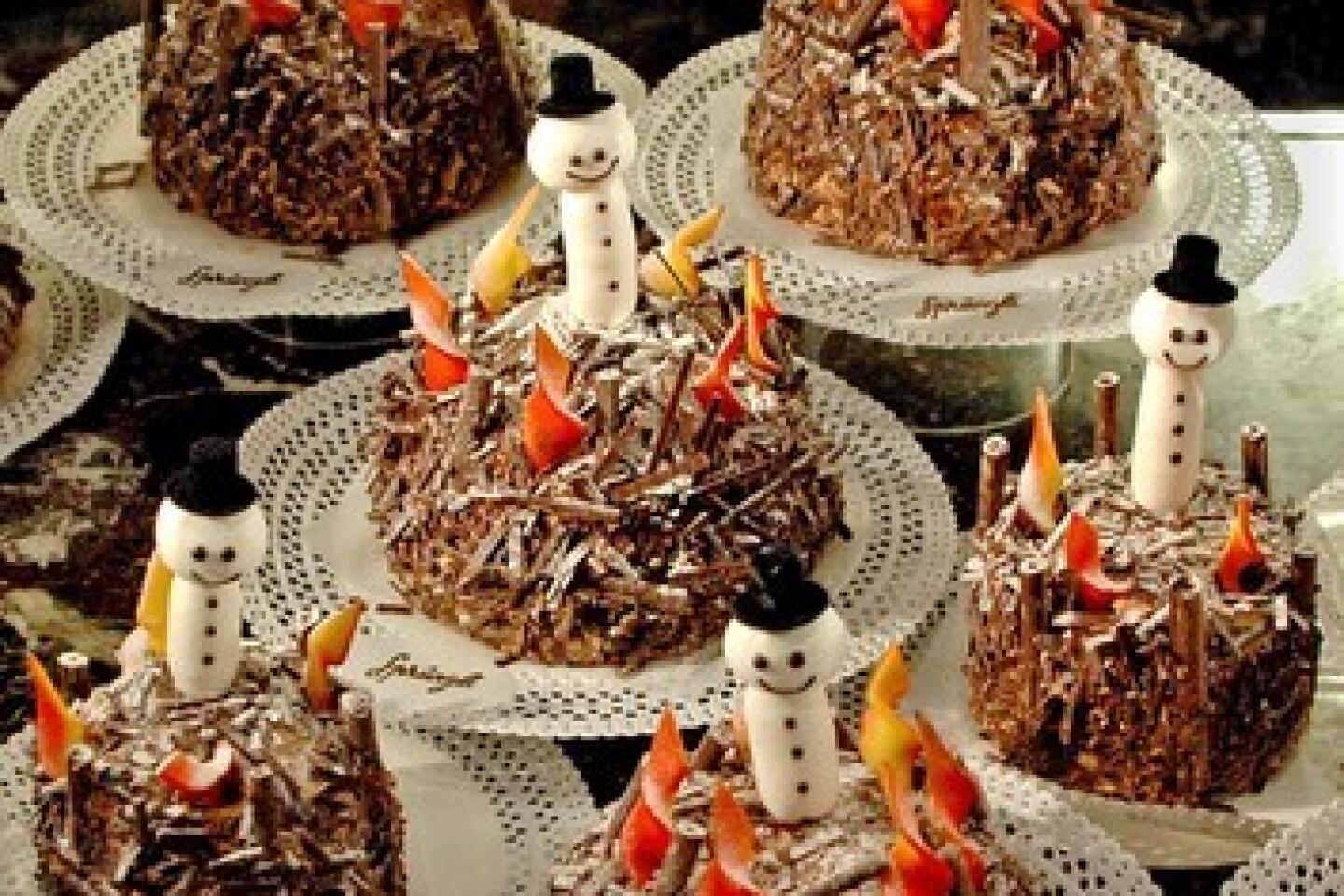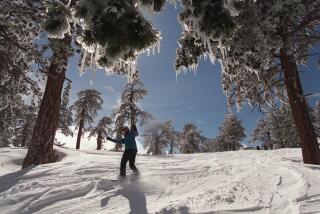Zurich’s spring greeting
We knew something was afoot in Zurich when our lazy walk through the streets of the old city turned into a full-fledged history lesson.
My husband, 8-month-old daughter and I had flown into the city just a couple of hours before, and as we wandered along the Limmat River, we heard three booms that sounded as though they’d come from a cannon.
We weren’t sure what it was -- or why -- but as a crowd began gathering at the Weinplatz, an open plaza just off the river, we joined in.
That’s when we noticed that mixed in with the Swiss teenagers in jeans and coats were some people decked out in period garb. Men wore knickers, bright stockings and full-length cloaks. Women wore hoop skirts, dirndls and dresses with aprons.
IF YOU GO
THE FESTIVAL
This year’s Sechseläuten officially began today. But if you’re planning to attend future activities, note that some balls and events begin a few days before the official dates.
Info: The Zurich tourism office’s website offers information on hotels, restaurants and more; 011-41-44-215-40-00, www.zuerich.com/en/welcome.cfm.
The cannon sound had come from a barge that was quickly closing in on a dock near the Weinplatz, with passengers aboard in outfits that would have been perfectly appropriate for a Crusade.
This, we learned, was Sechseläuten -- the city’s singular celebration of the arrival of spring. Each April, the people of Zurich celebrate the end of winter with a weekend of balls, parades and the ceremonial burning of a snowman effigy. And, as a brass band began to herald the barge’s arrival, we realized we had found ourselves, by sheer luck, in the middle of it all.
There was, I admit, a bit of happenstance in choosing Zurich as our destination. We’d cashed in some frequent-flier miles to visit Italy, where we planned to meet up with our older daughter and her grandparents. United Airlines had given us tickets on Swiss International Air Lines. Swiss used Zurich as a hub. We’d never been to Zurich. So, why not stop here on the way to Italy?
As we wandered the city, we basked in the warm sunshine with a mix of tourists and natives who had come out for Sechseläuten. Pastry shops marked the occasion with special snowman treats. Flowers were everywhere.
For the non-German speaker, information on the festival was scant, which made it both a challenge and an adventure for us. Although there’s a detailed German-language website about the event, all the tourist information office had for us was a one-page English explanation of the event.
“Every year the guilds of Zurich and the townspeople celebrate with great gusto their traditional spring festival,” the English material said.
So, like our choice of Zurich itself, our Sechseläuten was, at least at first, filled with serendipity.
A walk along the shores of Lake of Zurich, to show our daughter the swans, yielded a small street fair nearby, with carnival rides, stands selling wurst and a towering Ferris wheel. Our hike to visit the Lindenhof, where old Zurich’s Roman castle once stood, meant we also found (besides more wurst) Chapeau, an outdoor music festival with performers as diverse as brass bands and full rock.
The juicy wurst, which was served with a fist-sized roll and a dollop of spicy mustard, was our culinary mainstay for the three days we were in Zurich, thanks to a weak dollar and a need to safeguard our budget. We had planned to rely on an ample breakfast, courtesy of the Leonardo Rigihof Hotel, where we were staying, and street fare. Which, during Sechseläuten, meant only one thing: wurst.
By Sunday, our second day, we had clued in to Sechseläuten’s schedule in time to find a place along the Bahnhofstrasse, the city’s main shopping strip, to watch the children’s parade. A few minutes after 2 p.m., the parade began with music and groups of schoolchildren, each representing a different era of Zurich’s history, from Roman times through World War II. Little boys were dressed up as knights, girls wore Marie Antoinette wigs that tilted over their delicate features, and an eager crowd cheered the marchers on, sometimes greeting them by name.
As the parade slowed, some onlookers ran out into the middle of the children with gifts for the young marchers: flowers, mostly, but once in a while, a giant pretzel tied on a ribbon, which was placed around the marcher’s head like a necklace of Mardi Gras beads.
The word Sechseläuten translates as “the 6 o’clock hour ringing of the bells” -- a nod to the time when the workday was done for guild members in medieval times. And Sechseläuten traditionally concludes at 6 p.m. Monday with the burning of the Böögg -- that snowman effigy, whose head is filled with explosives. Folk wisdom holds that the time between the lighting of the Böögg’s pyre and the explosion of its head is a clue to what the summer will be like. (A quick burn signifies a long, warm summer; a drawn-out fire means a cold and dreary one.) It took a little more than 26 minutes last year, a fairly swift and promising showing.
Our tickets from Zurich put us on a train to Milan before the pyre was lighted. But we took along a box filled with Swiss chocolates and a delicately rendered Böögg pastry and said our own farewell to winter along the way.
cara.dimassa@latimes.com
More to Read
Sign up for The Wild
We’ll help you find the best places to hike, bike and run, as well as the perfect silent spots for meditation and yoga.
You may occasionally receive promotional content from the Los Angeles Times.









